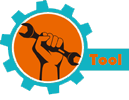Whatever the medium, the majority of US firms now operate in settings where customers expect prompt assistance. Workers can use web forms, internal apps, chat, email, or the phone to report issues. To do this, a channеl IT help desk with many channels is required. Support staff can reply as each desires without causing delays or misunderstandings.
The goal here is not to look more current by acquiring additional tools. Making sure people don’t become stranded as they wait for solutions is the goal. It irritates people when they receive a sluggish response or are forced to employ a single antiquated technique. It has a significant cost to businesses.
A Change From Conventional Help Desks
In the past, a phone line or email inbox was typically the primary method of receiving IT support. As long as most employees were in the same building, these were effective. But workplaces are different now. It is common to work remotely. There are teams dispersed. Everyone expects tech assistance to function similarly to other contemporary services.
Because of this, companies are eschewing single-channel configurations. These days, a support desk that simply answers by phone or email cannot keep up. The process slows down, leads to misunderstandings, and frequently leaves employees wondering if someone is working on their problem. The help desk can reply to emails, chat messages, and ticket system messages without requiring the user to transition between tools. For both parties, it saves time.
More Reaction Time and Reduced Downtime
It costs money to be down. When systems are unavailable or someone is unable to obtain the necessary tools, work ceases. That is quickly fixed by a strong help desk. Through the removal of friction, multi-channel support expedites the process.
Someone might, for instance, submit a brief note in a chat tool after seeing an issue during a video conversation. Waiting on hold or opening a ticket is not necessary if the help desk can take immediate action on that message. With that one minor change, minutes that frequently turn into hours in outdated systems are saved.
The simplicity of this type of quick repair isn’t the only reason. Service, sales, and delivery are all impacted by those delays in environments with big teams or time constraints. Those dangers are diminished by a help desk that integrates across channels.
Enhanced User Experience
Support is frequently the sole way that staff members interact directly with IT. The system loses credibility when it is slow or cumbersome. This eventually results in workarounds, shadow IT, and other issues.
Multi-channel help desks make things easier for users. The method that works best for them can be used to reach out. The same channel they used to report the problem is also where they receive real-time updates.
Trust is increased by this use. People perceive that they are heard. They are aware that someone is trying to solve the issue. This type of assurance makes the entire company function more efficiently.
Versatile Assistance for Hybrid Tasks
IT teams faced additional difficulties as hybrid work became more popular. Employees now work from several offices, from home, or while traveling. It is no longer logical to support them over a single fixed channel.
Users can reach multi-channel IT Help Desk companies in USA at their convenience. Whether they’re working from a desktop computer, tablet, or phone is irrelevant. They don’t need to change platforms or take additional procedures to seek assistance.
It’s important to be flexible. Without it, minor issues are either neglected or addressed later. Significant technical problems or security threats are frequently caused by that delay. When help is easily accessible, users report issues early, allowing IT to address them before they become more serious.
Handling More Requests Without Degrading the Result
The need for help grows along with enterprises. A lot of requests from various departments are frequently sent to IT help desks. When a system is weak, things fall through the cracks.
Without sacrificing quality, multi-channel systems assist in controlling that loudness. In one location, they enable teams to route, track, and reply to requests from any source. A system ticket, an email, and a chat request may all appear in the same queue.
The organization is maintained by this arrangement. Support teams can also prevent lengthy delays, missing follow-ups, and redundant work. Business services run more smoothly as a result, and IT’s job is easier to handle.
Better Monitoring and Recording
Support encompasses more than just problem-solving. Planning, identifying trends, and enhancing systems are also important. Data collection and analysis are made simpler with multi-channel help desks.
Regardless of the input channel, IT personnel can monitor response times, recurring problems, and common pain points. Using that information, they can upgrade systems that frequently malfunction, modify procedures, or enhance training.
Business decision-making is aided by this type of reporting. It identifies the sections of the system that slow people down and where resources are needed. Support becomes a proactive service over time instead of a reactive one.
Simpler Integration With Additional Resources
IT systems today hardly ever operate alone. Ticketing systems, asset management tools, communication platforms, and HR tools must all be connected to help desks. That is made easier with a multi-channel setup.
Getting Ready for Other Needs
Technology is changing quickly. Maybe next year, what works now won’t be enough. Multi-channel help desks for IT provide companies with an extensible framework.
A flexible core structure facilitates the addition of new channels. IT teams can connect a new communication technology to the help desk rather than starting from scratch if it becomes popular. Businesses may remain responsive in a changing environment, and support teams are prepared for change thanks to it.
Conclusion
Due to the outdated methods, US businesses are now opting for multi-channel IT support desks. On every device, people want quick, easy service, no matter where they are. Multi-channel systems satisfy that requirement without becoming more complicated.
They reduce downtime, enhance user experience, and support IT staff in maintaining the organization. Companies are also ready for expansion and change in the future. It is not only beneficial in a world where every minute of downtime counts. It’s vital.













